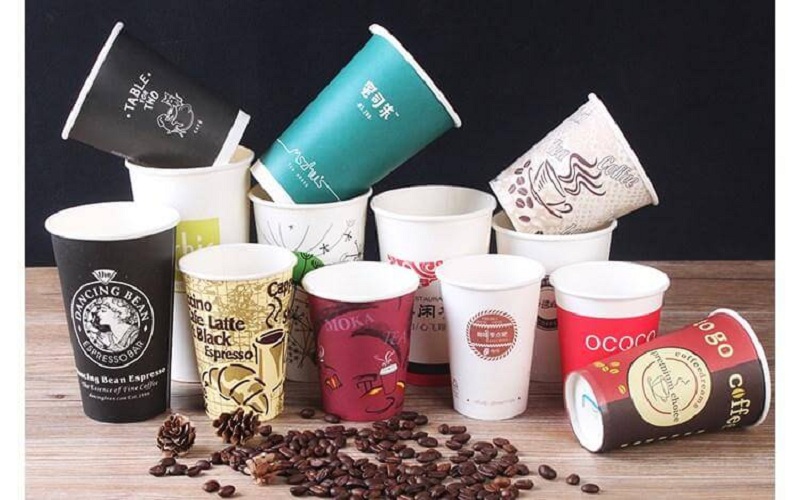Does your restaurant, cafe, or bakery serve coffee? Are you trying to find a cheap way to purchase a lot of coffee cups? You can keep your customers happy and save money by buying paper coffee cups in bulk. To keep your business running smoothly, utilize these helpful guidelines to locate the top provider to buy paper coffee cups in bulk and place your order.
1. Determine Your Needs
When purchasing paper coffee cups in bulk, you should first ascertain your anticipated requirements and consumption. You may estimate future requirements by keeping a close eye on how many coffee cups you use each day, week, and month. This will supply you with the essential statistics. For instance, you will require an estimated 3,000 cups each month if you run a small cafe that serves 50 clients daily and you now use 100 cups per day on average. A larger coffee shop with 500 daily patrons and 800-1,000 cups consumed would require 24,000–30,000 cups per month. By examining previous consumption trends, you may precisely determine how much bulk purchase to place. Purchasing too few cups puts you at risk of running out, while overspending creates storage issues and may result in waste from older stock that is not used up quickly enough. By taking the effort to ascertain the anticipated level of demand, you may place bulk orders that guarantee the right amounts and sizes of cups, keeping your company well-stocked. Optimizing efficiency and savings requires this inventory analysis and planning procedure.
2. Choose Your Preferred Size and Style
When buying bulk paper coffee cups, it’s important to decide on the best sizes and styles for your business. Coffee cups come in options like 12oz or 16oz for standard single-serve sizing. If you want to provide customers size choices, offering both a 12oz and 16oz bulk cup supply allows providing two portions. Beyond size, cup styles include standard, slim and mega profiles. Slim cups use less paper material which can mean some cost savings, while mega cups offer extra capacity for larger orders. The wall design also varies including single-wall, double-wall, or even triple-wall insulated cups which have air gaps to maintain heat and prevent burning hands. Insulated cups keep coffee hot longer but cost more. Determine what works for your customers and cafe flow – standard double-wall 12oz and 16oz often fills basic bistro needs. Choosing complimentary sizes and styles upfront prevents overbuying the wrong bulk options for your business.
3. Determine Ideal Thickness and Material
When purchasing bulk paper coffee cups, pay attention to cup thickness and materials. Thickness is measured in paper weight (g/m2) and often ranges from 12-20 gsm. While thinner 12-14 gsm cups are more affordable, they tend to feel flimsy with subpar heat retention. Going thicker for 16-20 gsm provides better durability for handling and improved heat maintenance to keep coffee steaming. However, thicker cups cost more in bulk. So weigh priorities – splurge on extra thickness if customer experience is key or save with thinly lined cups for budget consciousness at the expense of some quality. Also consider recyclable plastic-lined, biodegradable or compostable materials. Compare to find the ideal bulk cups for your business.
4. Research Your Top Supplier Picks
Not all bulk coffee cup distributors are equal. Do some diligence to find suppliers with high-quality products, reliable customer service and reasonable pricing. Search for manufacturers near you to reduce shipping costs. Review testimonials and compare pricing tiers for bulk order discounts. Don’t compromise on quality to save a few dollars – flimsy cups can lead to leaking and dissatisfied customers. Taking the time to find the best bulk cup stockists saves hassle over time.
5. Place Your Bulk Order
Once you’ve assessed your needs and researched suppliers, it’s time to place your bulk order. Expect price discounts for larger quantities like sleeves (usually 25 cups per sleeve) or master cartons (often 2,500+ cups). Purchase enough for 2-4 weeks of peak usage so you don’t run low but also minimize storage. Restock as needed based on your consumption rate – the more cups you order, the more you can potentially save per cup.
6. Store Properly to Maintain Quality
Properly storing bulk packages of paper coffee cups is critical for preserving freshness and preventing damage. After receiving a large cup shipment, immediately move boxes off damp loading docks or floors onto pallets or dry storage shelves. Neatly stack boxes in organized piles no more than 8-10 high to avoid crushing cups at the bottom under excess weight. Keep them in a clean, dust-free storage room with controlled climate conditions between 50-80° Fahrenheit along with low humidity levels under 50 percent. Hot, humid warehouses can breed moisture and mold which damages cup quality and appearance. Ensure no water pipes or leaks risk getting cardboard damp. The right dry, temperate warehouse environment keeps bulk cups in optimum condition so they don’t degrade before use.
7. Get Creative with Customization Options
Beyond choosing disposable coffee cup sleeves size and colors, consider creative customization to make your cups unique. Many distributors offer logo printing services ideal for branding your business. Custom signage is also available like corrugated sleeves with prepunched holes for display. You can print removable labels or choose cup sleeves for easy branding. Even paperless options like embossing your logo into cups builds brand recognition with repeat customers. Provide your design to printers for an affordable fee per piece.
8. Embrace Eco-Friendly Alternatives
Today’s customers care about sustainability. Make sure your supplier offers eco-cup options like plant-based materials or recycled paper content. Compostable cups break down more safely if customers don’t properly recycle. Or provide incentives for customers who bring reusable mugs. Follow local regulations as some cities ban non-recyclable cups or charge extra fees. Eco-friendly cups appeal to modern consumers while helping the environment..
Conclusion
With many sizes, materials, customizations and suppliers to evaluate, buying bulk paper coffee cups may seem daunting. But following the tips above simplifies the process so you can make an informed purchasing decision without headaches and can find flexible packaging suppliers. Determining your needs, finding quality eco-friendly cups and ordering enough inventory to meet demand without overstocking helps your boutique, bookshop or brunch cafe operate smoothly all year long!




